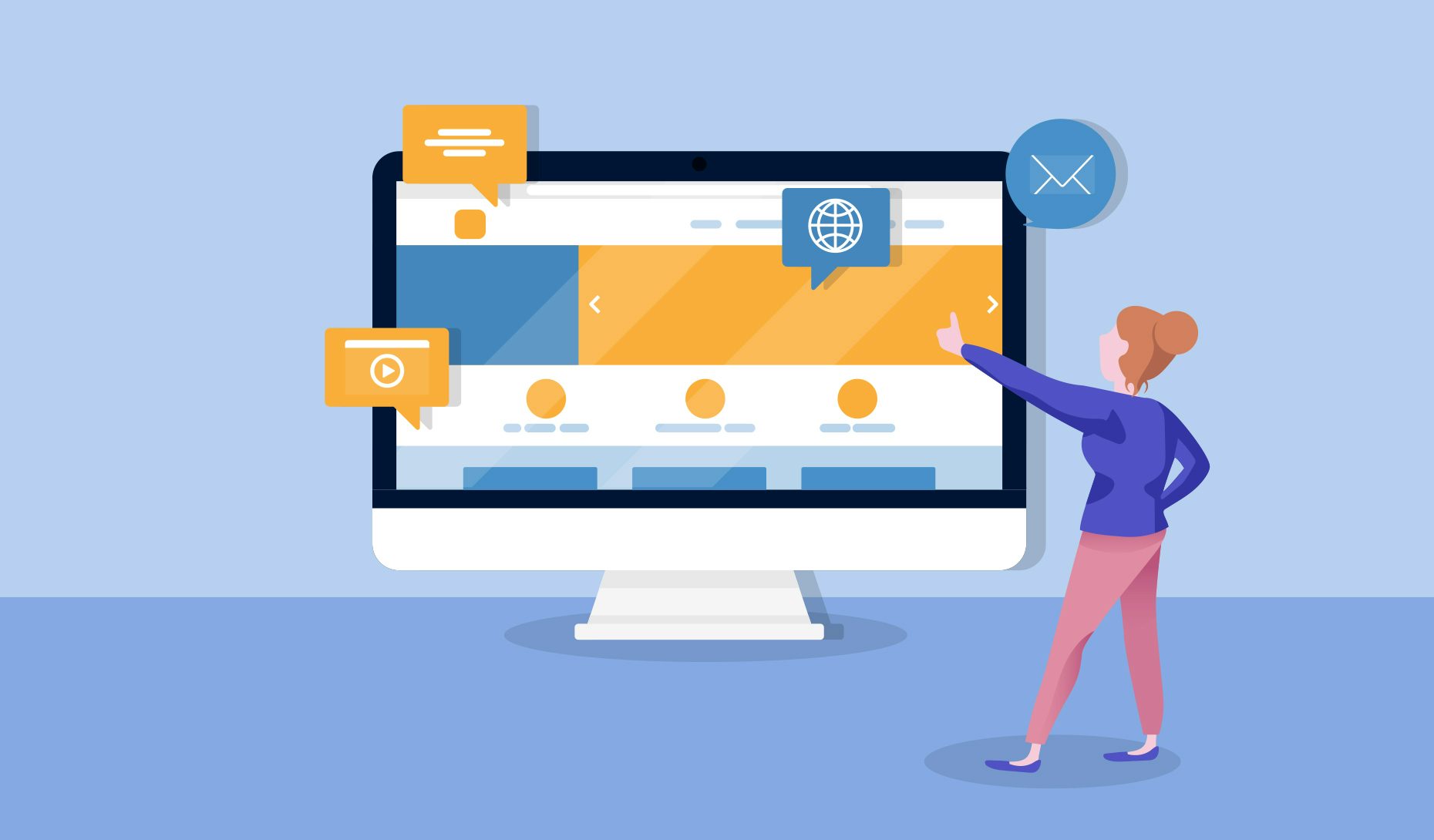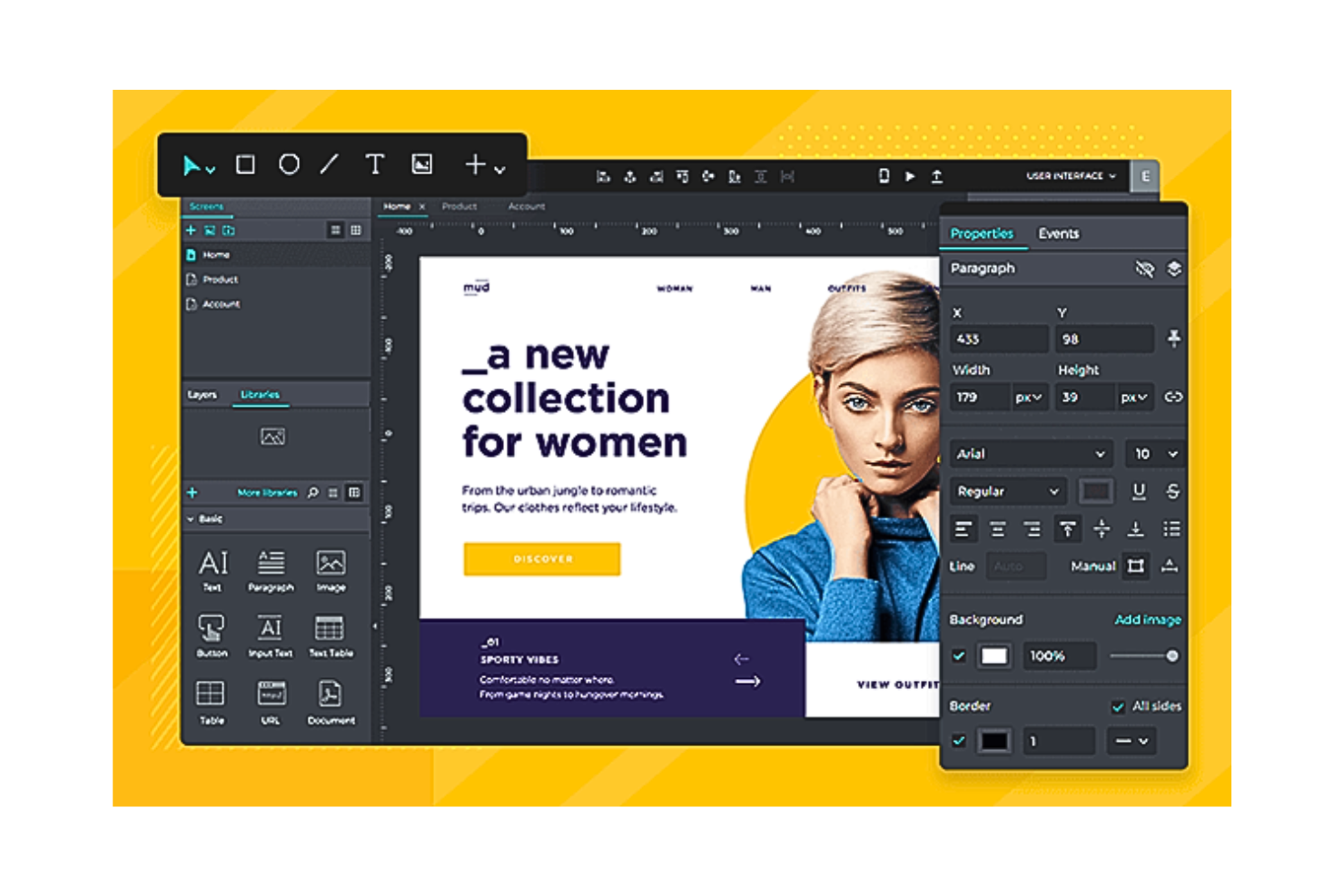The Comprehensive Overview to Crafting Aesthetically Appealing and Useful Website Design That Meets Individual Needs
In today's electronic landscape, the importance of crafting internet designs that are both practical and visually enticing can not be overstated. By prioritizing user-centered layout concepts, designers can create experiences that not only draw in yet likewise retain user passion - web design.
Understanding User-Centered Design
At the heart of effective website design exists the principle of user-centered design, a viewpoint that prioritizes the requirements, choices, and actions of individuals throughout the advancement procedure. This strategy includes detailed study to recognize the target audience, making sure that the end product resonates with its intended customers. By including customer responses at every phase, developers can produce interfaces that are not only visually appealing yet also useful and instinctive.
User-centered style highlights compassion, calling for designers to tip right into the customers' shoes and consider their perspectives. Methods such as user personas, trip mapping, and usability screening are employed to determine pain points and chances for enhancement. This repetitive procedure enables constant improvement, as designers adapt to evolving individual demands and technological advancements.
Integrating user-centered layout results in raised user satisfaction and interaction, inevitably resulting in greater conversion prices and brand commitment. It cultivates a collective setting where stakeholders, including developers, individuals, and programmers, collaborate to accomplish a common vision. By placing individuals at the center of the style process, companies can create web sites that not just satisfy business goals but likewise provide satisfying and purposeful experiences for individuals.
Trick Principles of Visual Layout
Reliable visual style acts as the foundation for producing easy to use and appealing internet sites. It incorporates several essential principles that assist developers in crafting aesthetically pleasing and functional interfaces.
First, equilibrium plays a crucial role in accomplishing aesthetic consistency. Developers need to disperse components equally across the layout to stay clear of frustrating users. This can be achieved through unbalanced or in proportion style techniques.
Following, comparison improves readability and accentuates essential elements. By using differing colors, shapes, or sizes, developers can develop focal factors that direct users through the content.
In addition, placement is necessary for organizing information. Regular positioning of message and pictures fosters a tidy design, improving total navigation and customer experience.
Distance also adds to visual quality. Grouping relevant products with each other aids customers in comprehending the relationship between various elements, making the user interface much more instinctive.
Finally, consistency in style components, such as fonts, designs, and colors, enhances brand name identity and aids customers navigate the website much more easily. By integrating these essential concepts of visual design, internet designers can develop interfaces that are not just visually enticing but additionally functional and user-centered.
Relevance of Responsive Design
Receptive design is a crucial element of modern internet development, making sure that websites work effortlessly across a range of tools and display sizes. As the web landscape advances, the diversity of devicesâEUR" ranging from smartphones to tablets and desktop computersâEUR" requires a design technique that suits all users.
Executing receptive layout enables a flexible format that instantly adapts based on the individual's display measurements. This adaptability not only improves access yet additionally improves functionality, as customers can navigate and interact with the website easily, no matter their tool.

Furthermore, receptive layout reduces the requirement for preserving numerous versions of a web site, simplifying updates and material management. This efficiency equates right into price savings and a more cohesive brand experience throughout systems.
Enhancing Customer Experience
Customer experience (UX) is a crucial part of website design, affecting just how site visitors connect with an internet site and regard its worth. A well-crafted UX ensures that users can browse with ease, find information easily, and achieve their objectives successfully. The layout needs to think Going Here about the individual's journey, from the moment they arrive at the site to the conclusion of their wanted action, whether that be purchasing, signing up for an e-newsletter, or accessing details.
Crucial element that improve UX include clear navigating, receptive designs, and engaging aesthetic web content. Uniformity in style elements such as font styles, colors, and switches promotes familiarity, making the internet site really feel cohesive. Additionally, optimizing lots times is essential; individuals are less most likely to remain on a website that is sluggish to respond.

Testing and Iterating Layouts
Examining and repeating styles are fundamental procedures that adhere to the preliminary development of a website, making certain that the individual experience remains at the forefront of any kind of modifications. These phases entail collecting individual feedback, assessing layout performance, and making educated adjustments to enhance usability and involvement.
Efficient testing can take numerous forms, consisting of functionality testing, A/B screening, and user studies. Use testing my company permits developers to observe genuine customers as they communicate with the site, identifying discomfort points and locations for enhancement - web design. A/B testing, on the various other hand, contrasts two variations of a style element to figure out which carries out much better, offering measurable information to guide choices. Individual surveys can provide qualitative understandings, catching customer beliefs and choices.
Continual model cultivates a flexible layout strategy, where the internet site advances in feedback to customer actions and comments. By dedicating to extensive testing and version, designers can create a site that not only meets aesthetic standards yet additionally provides a smooth and satisfying user experience.

Conclusion
Finally, effective web layout necessitates the combination of user-centered concepts, vital visual layout components, and responsive frameworks to produce appealing user interfaces. By prioritizing individual requirements and applying continuous testing and version, developers can refine their developments to improve total satisfaction. The commitment to these methods not only cultivates an aesthetically appealing aesthetic but additionally ensures functionality across diverse devices, ultimately contributing to here a positive individual experience and boosted involvement.
By prioritizing user-centered style principles, designers can develop experiences that not just bring in yet additionally preserve customer interest.At the heart of effective internet layout exists the principle of user-centered style, a viewpoint that prioritizes the needs, choices, and actions of customers throughout the growth procedure. By putting users at the forefront of the design procedure, organizations can create sites that not only fulfill organization goals however also give gratifying and meaningful experiences for users.
By focusing on individual requirements and preferences, internet developers can create experiences that are not just aesthetically attractive but also useful, inevitably promoting user complete satisfaction and loyalty.
User studies can use qualitative insights, catching user views and preferences.